Wisconsin is one of the best states to live in if you’re fascinated by birds. It’s home to an impressive range of diverse bird species. In fact, over 400 bird species have been recorded in Wisconsin.
You may not see all 400+ bird species in your backyard. There are, however, some common birds that you can expect to see in Wisconsin all year long.
In this post, we shed light on the 14 most common backyard birds of Wisconsin that you can see in, and attract to, your backyard. By the end of the article, you should be able to identify your friendly backyard visitors, so be sure to stick around!
14 Most Common Backyard Birds of Wisconsin
These 14 bird species can be, on average, seen throughout the year in Wisconsin. We’ve arranged them in the order in which they’re most frequently seen.
1. Black-Capped Chickadee

The Black-capped Chickadee isn’t just one the most common bird species in Wisconsin; it’s also one of the most loved. This tiny bird is recognized for its black cap and bib with a white stripe dividing the colors. Its rounded belly is white as well.
Black-capped Chickadees are bold, curious, and easily adaptable. They’ll investigate anything and everything, including you. That’s why you have a high chance of feeding them from your hands. They might even sit on your hands as they feed.
Author Note: Their diet consists of seeds, insects, nuts, and berries. They particularly enjoy suet, black oil sunflower seeds, and peanuts.
If you have any bird feeders in your backyard, Black-capped Chickadees are likely to be the first birds to visit you.
2. American Crow
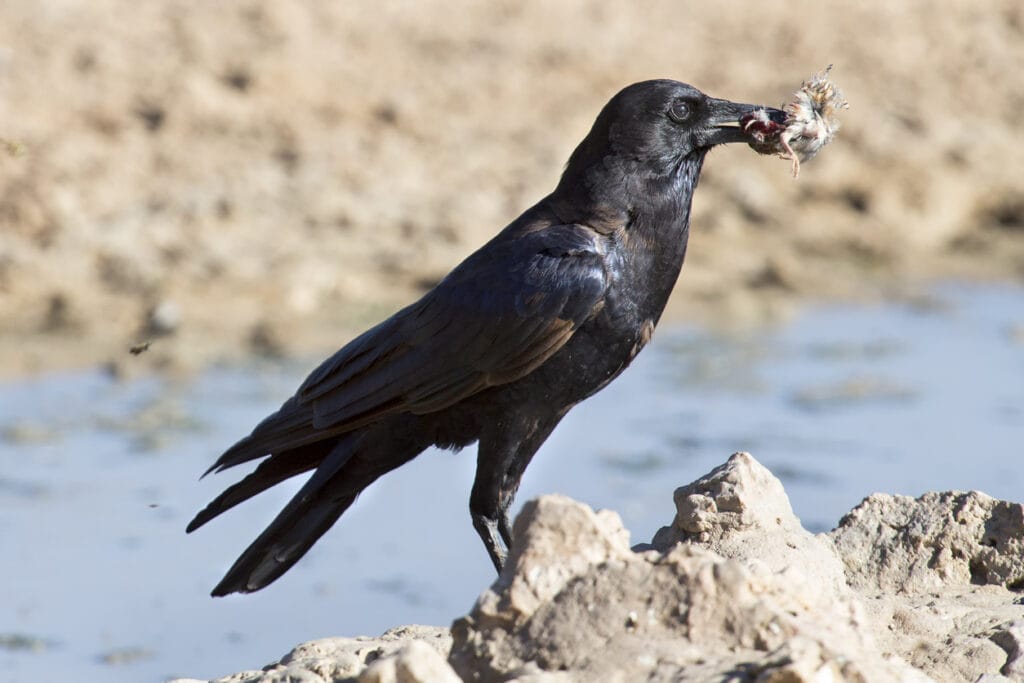
American Crows are large birds that are entirely solid black with an iridescent sheen. They have thick necks, large heads, black beaks, and long legs. Their tails are medium-sized with squared or rounded tips.
They’re some of the most intelligent birds in Wisconsin. Research shows that Crows in general can use tools, recognize human faces, solve problems, and even have their own language.
What’s more, American Crows roost in tree tops to get a good view of everything below. If there’s a source of food or danger, they call out to alert one another.
You can find American Crows throughout Wisconsin all year long. While American Crows won’t visit your bird feeders, they can be attracted by peanuts, whole kernel corn, and suet.
American Crows are omnivores that feed on almost everything. That’s why you should make sure not to leave out any food scraps, pet food, or garbage. You might find yourself stuck with a murder of crows.
3. American Robin
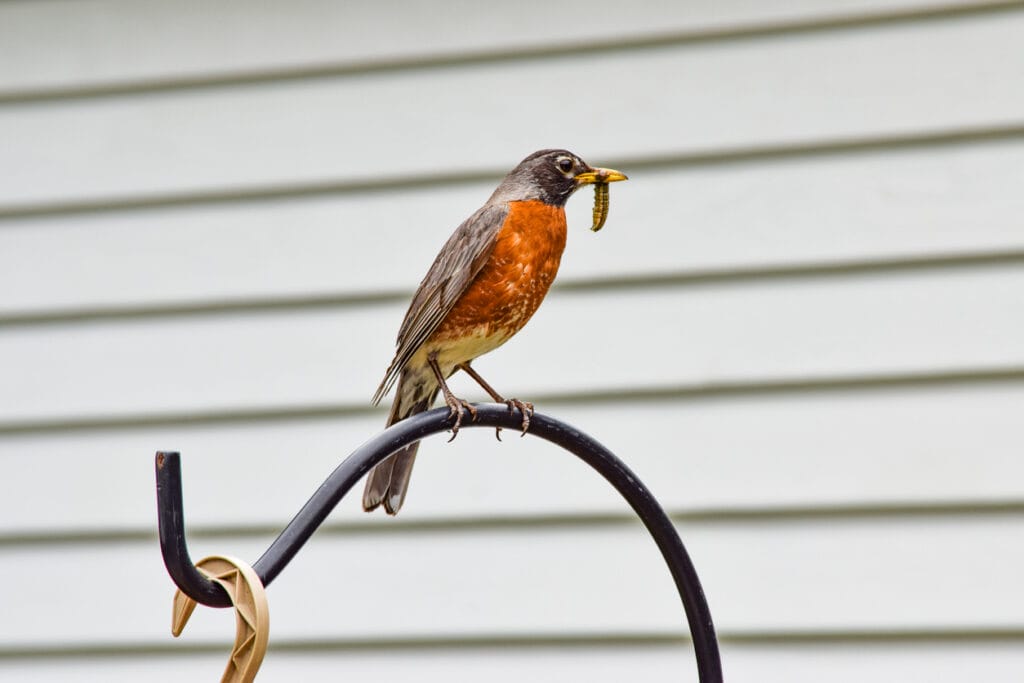
Not only is the American Robin a common bird in Wisconsin, it’s also the state’s bird. It’s actually a common sight in many Wisconsin backyards to find an American Robin pulling up earthworms in the grass.
American Robins have plump rusty-red or orange bellies. Their heads and backs are gray and brown—sometimes mistaken for black. They have small white blotches around their eyes and a yellow bill that’s slightly curved.
An American Robin’s diet mainly consists of earthworms, insects, snails, and fruit. For that reason, you may not find many Robins near your bird feeders.
Top Tip: If you want to attract American Robins to your backyard, you can set up platform feeders or scatter their favorite food on the grass.
American Robins also enjoy native Wisconsin fruits, so you can provide them with some by planting native fruit-bearing plants.
4. American Goldfinch

American Goldfinches, also known as Wild Canaries, are beautiful small-sized songbirds that have a uniquely-colored plumage that changes colors from season to season.
In summer, American Goldfinches have yellow bodies with black and white wings. Female Goldfinches tend to have a duller yellow than their male counterparts. In winter, both male and female Goldfinches’ plumage fades to the same olive-brown color.
An American Goldfinch’s diet is strictly vegetarian. It’s the only bird that feeds on seeds from day one. Goldfinches feed on weed seeds, thistle seeds, black oil sunflower seeds, and nyjer seeds.
You should avoid getting too close to an American Goldfinch if you don’t want it to fly away. While American Goldfinches are social birds, they’re easily scared.
That’s why they tend to keep their distance from humans. They also dislike sharing bird feeders with other larger birds.
5. Northern Cardinal
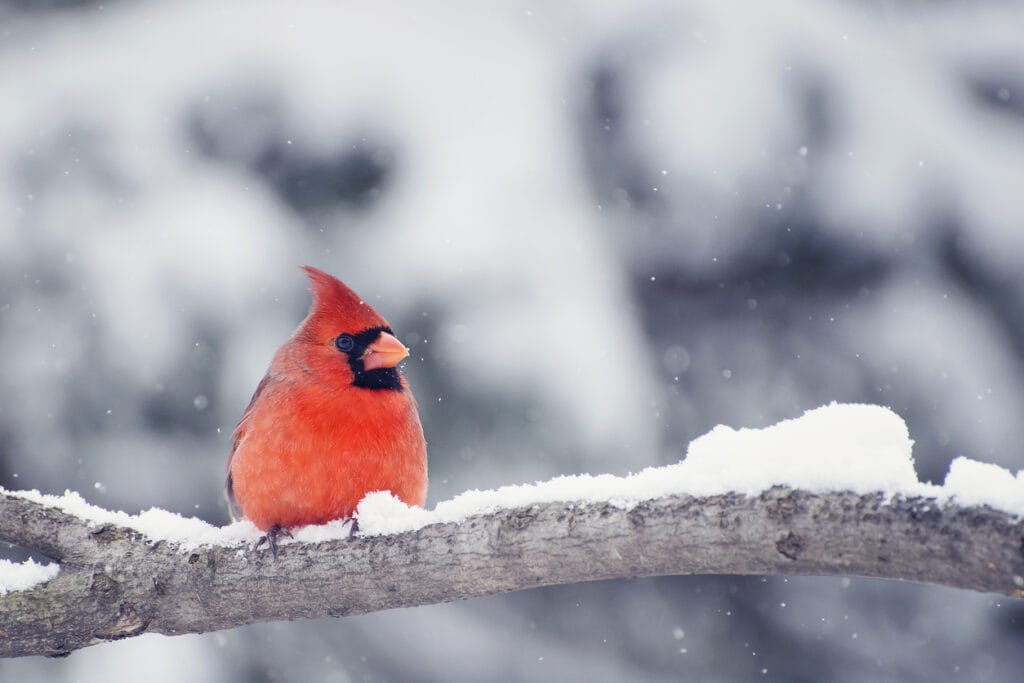
Northern Cardinals are among the most common and most recognizable backyard birds in Wisconsin. The female and male Northern Cardinals have reddish-orange beaks and mohawk-like crests on top of their heads.
Male Northern Cardinals have flaming bright red bodies and black masks. The female Cardinals are more brown with a bit of red on their crests, wings, and tails.
Northern Cardinals that visit your backyard should have no problems feeding from most types of feeders. They love sunflower seeds, millet, peanut hearts, and milo. They also feed on small insects, such as spiders and worms.
6. Mourning Dove
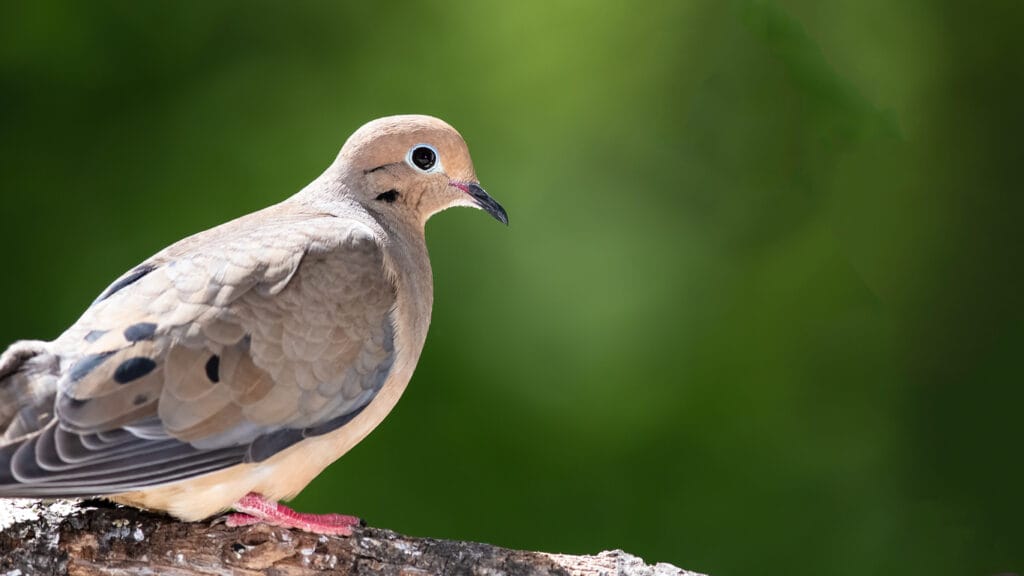
Mourning Doves are medium-sized birds that are mostly rusty brown with a few black spots on their wings. They have pinkish talons and black beaks. Their most distinctive feature is a blue ring circling their eyes.
You’ll most likely see Mourning Doves perched up somewhere high, like on trees and telephone wires. If not, they’ll be on the ground feeding.
The diet of Mourning Doves consists almost exclusively of seeds. They like black oil sunflower seeds, nyjer seeds, and safflower seeds. They also enjoy millet, cracked corn, and peanuts hearts.
Mourning Doves are more comfortable feeding on a flat surface. That’s why platform or tray feeders are the best for them. You can also just scatter some food on the ground.
7. Blue Jay

Blue Jays are large birds that are, just as the name suggests, blue. Their crest and back are pale blue and the wings are a bright blue. They have a bit of black around their necks as well as on top of their beaks. The underside is mainly white.
Blue Jays feed on nuts, berries, fruits, seeds, worms, and insects. They like tray or hopper feeders and can appreciate birdbaths.
Top Tip: You can attract Blue Jays to your backyard by providing them with whole peanuts, sunflower seeds, and corn. These blue birds are among the few birds that can crack open shells, so they can be a joy to watch.
Still, Blue Jays can be quite aggressive and hasty when it comes to food. They can go through your feeders at a startling speed.
Scattering peanuts and sunflower seeds far away from your bird feeders is one way to keep Blue Jays away from them. You can also put mesh cages around small bird feeders. This way you can ensure that other smaller birds can feed along with the Blue Jays.
8. Downy Woodpecker
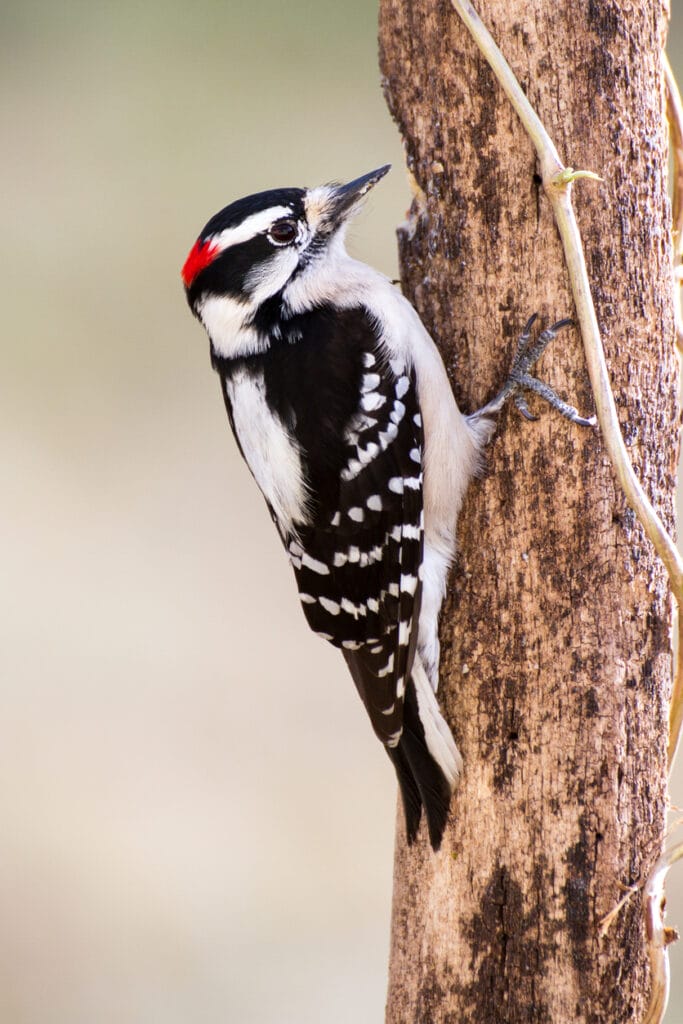
The Downy Woodpecker is a relatively small bird that can be seen in almost all Wisconsin backyards. It’s the smallest woodpecker in North America.
Its back is jet black, with a white-streaked head and white-spotted wings. Its underside is entirely white. Male Downy Woodpeckers have a red patch on their napes; the females don’t have one.
Downy Woodpeckers are common in wooded areas, parks, orchards, and backyards. Males are more likely to be found on smaller plants and twigs, whereas females are more likely to be found on tree trunks.
The Downy Woodpecker’s favorite foods are beetle larvae, black oil sunflower seeds, suet, peanuts, cornmeal, and berries. It also likes to scavenge arthropods from the backs of trees.
If you have a suet or platform feeder, you’re likely to find this woodpecker in your backyard. They’re also attracted to sugar water, so you might find them drinking from hummingbird feeders.
9. Red-Winged Blackbird
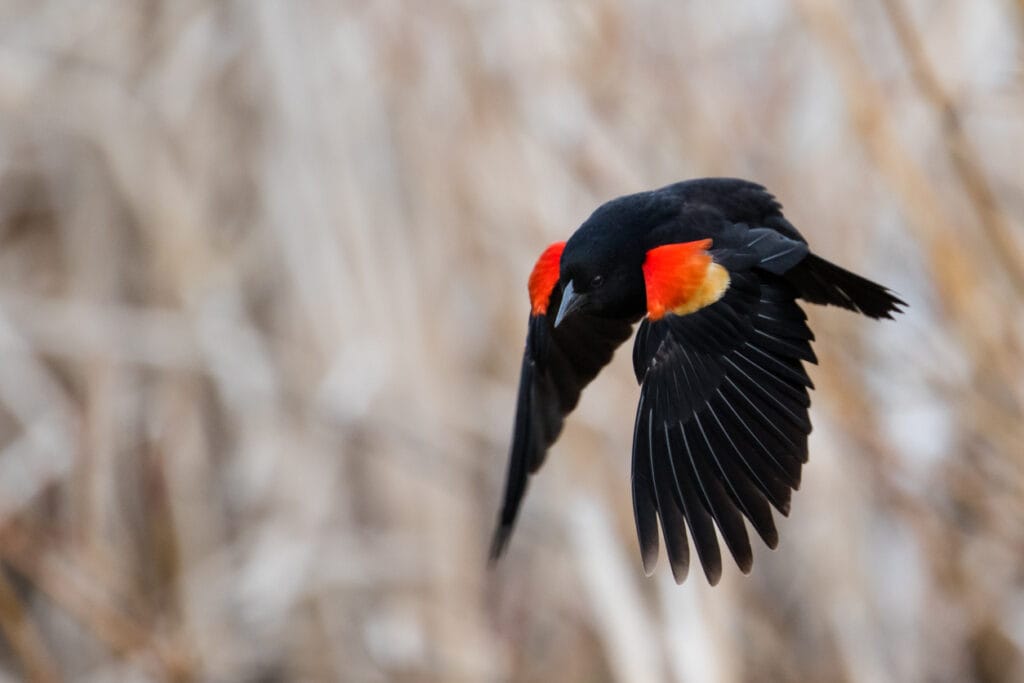
Red-winged Blackbirds are easily identifiable with their all-black plumage, with the exception of the bright red and yellow on the upper part of their wings.
Female Red-winged Blackbirds have a mixture of black and brown plumage with a faint yellow color under their beaks.
Red-winged Blackbirds eat worms, spiders, and insect larvae. They also like seeds, berries, grains, and nuts. You can feed them through tube or platform feeders.
It’s worth noting the male Red-winged Blackbirds are quite territorial; extremely so during breeding season. They usually sit somewhere high overlooking their area. They might even attack people if they get too close to the nests.
10. White-Breasted Nuthatch

The White-breasted Nuthatch is a neck-less, large-headed, small-sized bird. It has a blue-gray and black back. Its cheeks and underside are white or a chestnut color.
Author Note: The only difference between a male and a female White-breasted Nuthatch is the color of their caps. Male Nuthatches have a black cap, while females have a blue-gray crown.
White-breasted Nuthatches mainly eat insects, including spiders, beetles, ants, and caterpillars. They also like seeds and nuts. What’s more, mealworms, suet, sunflower seeds, safflower seeds, acorns, and peanuts are among their favorite foods.
While these Nuthatches prefer deciduous forests, they’ve adapted well to humans. Aside from your backyard, you can often see White-breasted Nuthatches at parks and cemeteries.
11. Red-Bellied Woodpecker

Red-bellied Woodpeckers are medium-sized birds. They’re most recognized for the fiery red on their heads and necks. They also have a faint red blush on their bellies that might be hard to spot at first.
You can tell the difference between a male and female Red-bellied Woodpecker through the red on their heads. Male Woodpeckers have a bright red plumage that starts from their beaks to their napes.
Female Red-bellied Woodpeckers, however, only have red plumage on the back of their necks.
Red-bellied Woodpeckers love sunflower seeds, peanuts, and suet. If you have bird feeders in your backyard, you can expect to see a lot of these Woodpeckers.
12. House Sparrow

The House Sparrow is one of the most abundant birds in Wisconsin—and the entire world. This is because it has a remarkable ability to adapt and live near humans.
House Sparrows’ diet consists of seeds, fruits, berries, insects, and grains. They can even eat bread and popcorn.
The males have brown and black backs, gray crowns, black bibs, and white cheeks. Female Sparrows are pale brown with black streaks on their back. Their bibs are pale yellow.
You should try to discourage House Sparrows from invading your backyard. They compete for nest cavities with other bird species and almost always win.
13. Dark-Eyed Junco
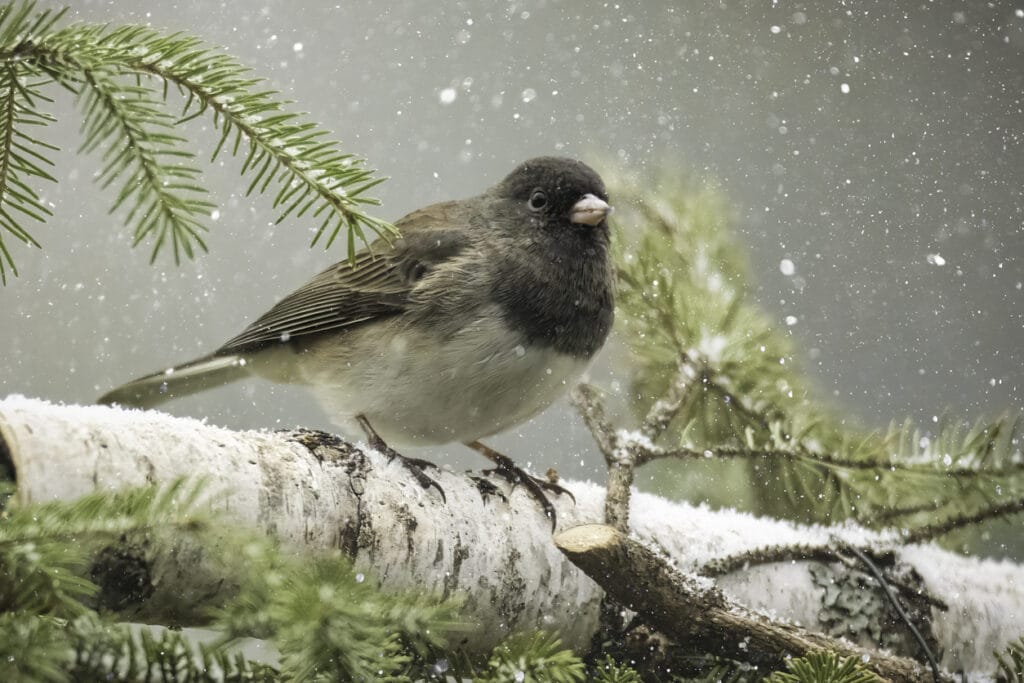
Dark-eyed Juncos, also known as snowbirds, have different colors based on the state they’re from. Wisconsin Juncos are entirely dark gray with white bellies. They have small rounded bodies, rounded heads, short necks, and long tails.
Many people think Dark-eyed Juncos can only be seen in Wisconsin during winter only. In reality, these snowbirds stick around all year long. They just tend to nest in the far northern part of the state.
Dark-eyed Juncos feed on most kinds of seeds. In summer, they feed on insects as well. You don’t have to set up any bird feeders for Juncos. They prefer to feed on seeds from the ground.
14. European Starling

In spring, European Starlings are a stunning purple and green iridescent color. They turn a black-brown color with white spots during the colder months.
Author Note: The European Starling has the ability to feed on almost anything, making it one of the most invasive bird species in Wisconsin.
As a result, it’s better that you don’t attract them to your backyard. You can discourage their presence by installing tube feeders or adding cage mesh around hopper feeders. You should also avoid feeding other birds food scraps.
In Conclusion
Wisconsin is an excellent state for birdwatching. You don’t have to look any further than your own backyard to find unique and fascinating birds.
You can simply install different bird feeders or scatter seeds in the grass. Both ways will attract birds of different species to your backyard. We hope you enjoyed this guide on the most common backyard birds of Wisconsin.
That said, You can go beyond your backyard to witness an even more diverse range of birds. Societies like the Wisconsin Audubon Society hold meetups, field trips, workshops, and other activities for birdwatchers.
What’s more, most Wisconsin counties have public birdwatching hotspots. Each hotspot has its own bird species, which gives you the chance to explore a wide range of different birds.
FAQ
The most common bird in Wisconsin is the American Robin.
The rarest bird in Wisconsin is the Kirtland’s Warbler.
There are many different types of birds that can be found in Wisconsin, including waterbirds, songbirds, gamebirds, and more. Some of the more common species found in the state include the American Robin, the Blue Jay, the Downy Woodpecker, the Eastern Bluebird, and the Tufted Titmouse.
The official bird of Wisconsin is the American Robin.




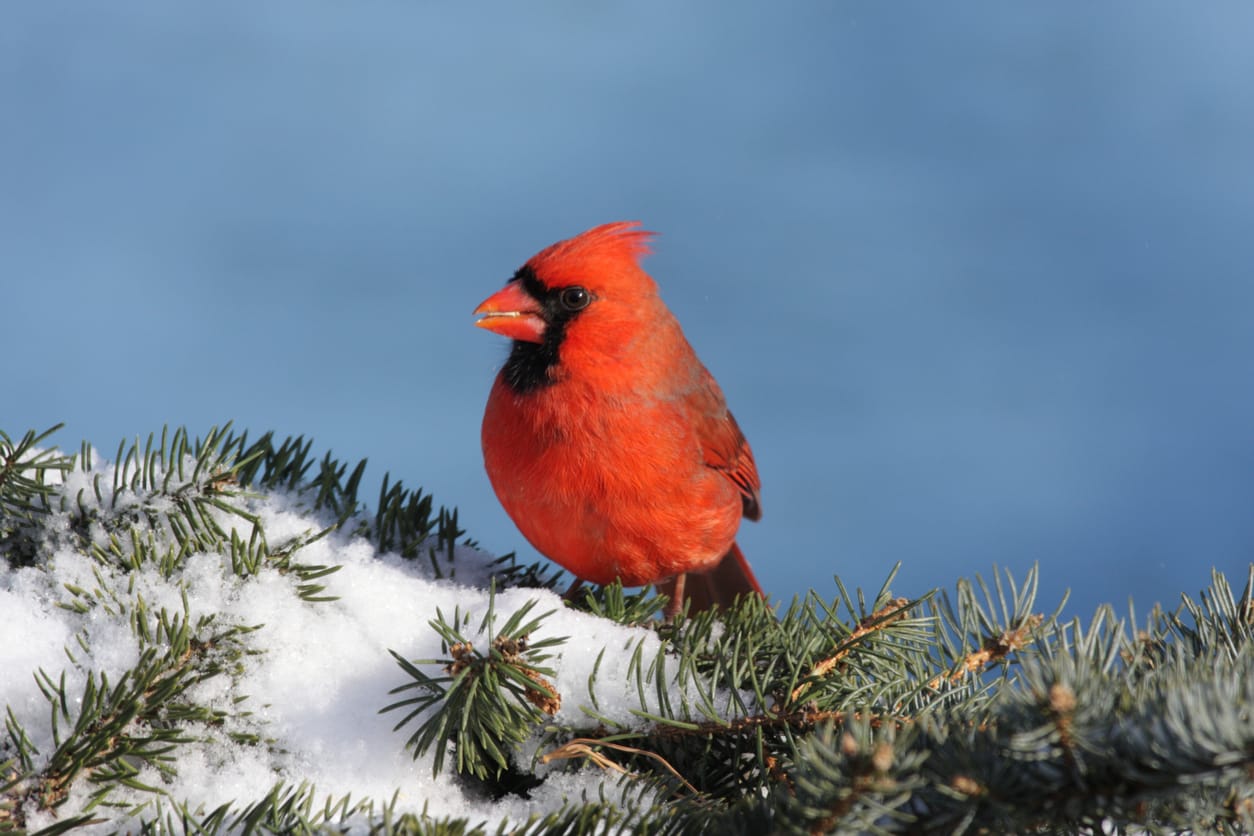
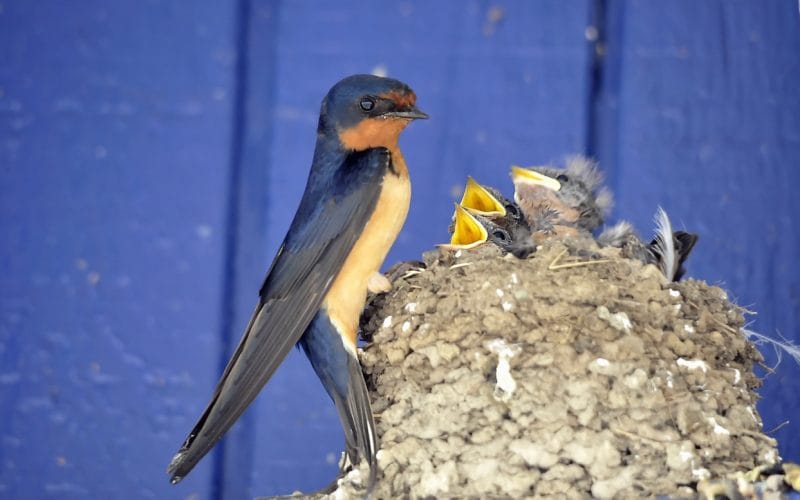
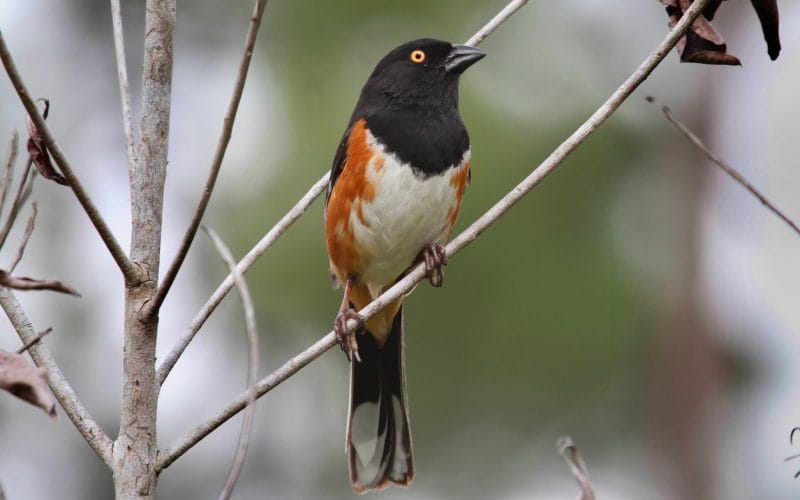

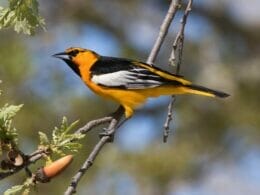
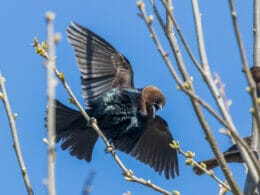
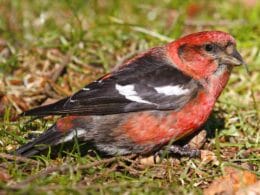
We have a small bird in our backyard small birdhouse that raised a family , it makes a chit chit chit sound, especially when you come near. What is it?